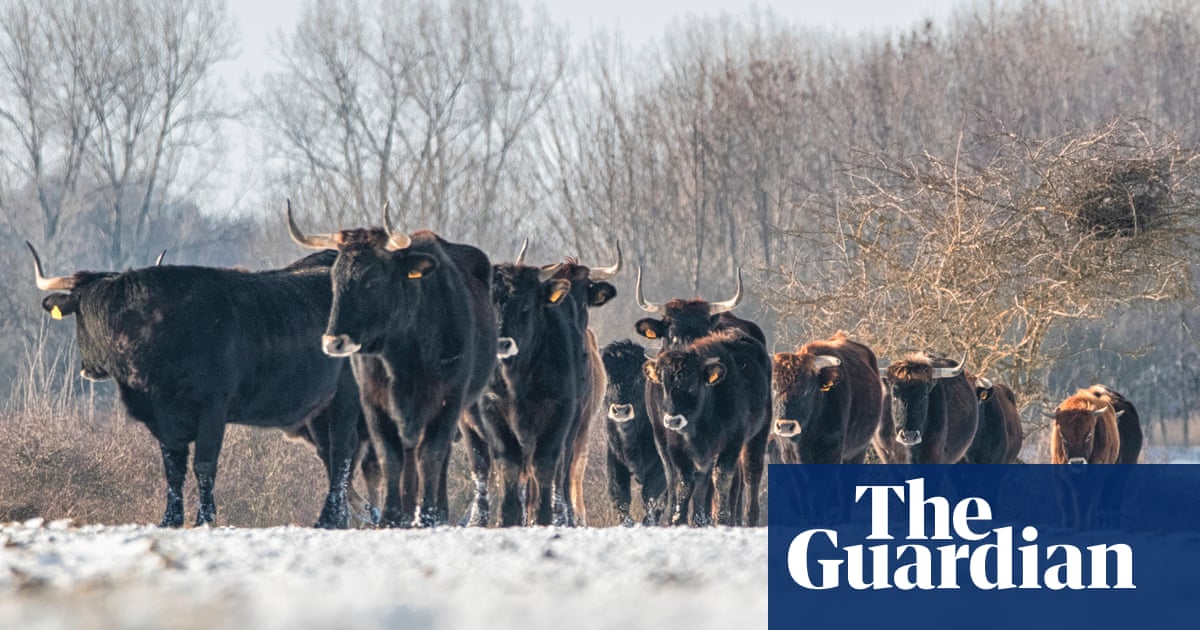A herd of beefy, long-horned tauros are to be released into a Highlands rewilding project to replicate the ecological role of the aurochs, an extinct, huge herbivore that is the wild ancestor of cattle.
The tauros have been bred in the Netherlands in recent years to fill the niche vacated by the aurochs, which once shaped landscapes and strengthened wildlife across Europe.
Trees for Life, the rewilding charity, is planning to create the first British herd of up to 15 of the animals on its 4,000-hectare (9,884-acre) Dundreggan estate near Loch Ness, in a scientific research project aimed at enhancing biodiversity, education and ecotourism.
“Introducing the aurochs-like tauros to the Highlands four centuries after their wild ancestors were driven to extinction will refill a vital but empty ecological niche – allowing us to study how these remarkable wild cattle can be a powerful ally for tackling the nature and climate emergencies,” said Steve Micklewright, the chief executive of Trees for Life.
The heaviest of Europe’s land mammals after the woolly mammoth and woolly rhinoceros, aurochs disappeared from Britain around 1300BC. Habitat loss and hunting led to their extinction, with the last female having perished in Poland in 1627. The DNA of aurochs survives in some ancient cattle breeds.
Since the early 2000s, scientists in the Netherlands have sought to bring aurochs back to life by interbreeding ancient cattle breeds that are genetically closest to the aurochs. This has been aided by the first sequencing of the aurochs’ complete genome, in 2011. Tauros have been “back-bred” to genetically replicate, resemble and behave like aurochs as closely as possible.
While classified as domestic cattle, tauros are similar in size to aurochs. Bulls can reach up to 180cm, compared with the 120cm maximum height of a Highland cow.
European studies have found that tauros are more active than other cattle, moving across landscapes in social groups and creating a mosaic of diverse habitats. Rutting tauros form “bull pits”, bowls of bare earth carved out by bulls’ horns and hooves, with the mighty beasts also strengthening their neck muscles by smashing their heads against one side of the pit. Such microhabitats support ground-dwelling invertebrates and pioneer plants.
Micklewright added: “Our tauros project is about looking forwards while learning from the past as we restore nature-rich landscapes that support wildlife and people, and are resilient to future environmental challenges. We also want to give people the chance to experience in a safe way the awe and wonder of getting close to an animal that feels really wild.”
after newsletter promotion
An earlier attempt to breed an aurochs lookalike, Heck cattle, was developed by Lutz and Heinz Heck in the 1920s. This aggressive breed – originally associated with Nazi Germany – has been deployed in some rewilding projects, although the rewilder Derek Gow got rid of his British-based herd because they were too difficult to handle.
According to Trees for Life, tauros are said to be placid towards people and have been bred from six ancient cattle breeds that are naturally unaggressive.



